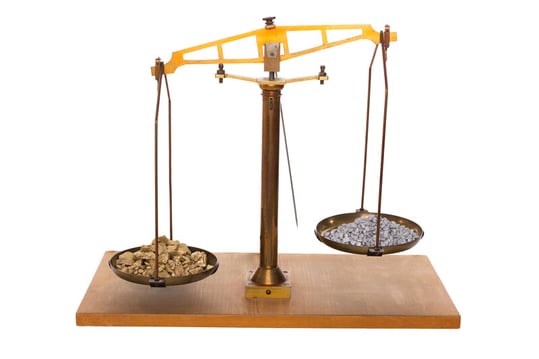Is Buying or Selling Precious Metals The Way To Go With The State Of The Current Market?
The Answer May Surprise You.

As a financial planning firm, there are certain questions we hear quite regularly. Questions such as "Am I saving enough for college? What age can I retire? What will my income look like in retirement?" and the like, have a permanent place in clients’ minds. There are other questions that we only hear during certain economic or market environments.
One question usually only arises during periods of sustained market volatility or economic fear— “Should I move out of the stock market and into gold, silver, or other precious metals”?
Gold, silver, and other precious metals have long been viewed as a hedge against inflation, global political strife such as wars, and/or a safe haven during times of market unrest. The reality is that even these historically non-correlated assets have been at risk in recent market environments and have largely lost their place as a hedge due to the decoupling of currency from the Gold System.
The thought is that when the cost of goods and services rises, the value of gold will rise along with them. If we were to look back throughout history, we see a picture that supports that idea quite nicely. Going back to January 1979, the Consumer Price Index has risen at about a 3.4% annual pace. In that same period, gold has risen in value slightly quicker at 4.64% per year while silver has risen slightly slower at 2.69% per year.
However, the closer we get to the present day, the weaker that relationship becomes. So much so that if we look at the most recent period of high inflation, the precious metals have moved in the opposite direction of inflation. Since March 17, 2022, the Federal Reserve has hiked interest rates 5 times, raising the Fed Funds rate a total of three percentage points in that period. They have done so in a stated attempt to reduce rising inflation which in that same period has increased by about 3% (6% annually). The value of gold and silver have fallen roughly 15% and 26% respectively in that same period. So much for holding their value during inflationary periods!
The second longstanding view of gold and silver are that they hold up well as a store of value during times of market unrest. It is convenient that in the date range previously examined the overall United States stock indices have also had a major pullback so that we can see whether that belief has held true during this most recent stock market drop.
Although it may already be clear from the previous paragraph, the answer is a resounding ‘no. To keep the dates consistent, the S&P 500 index has dropped a total of 16.82% since the first Fed rate hike in March. As we know, gold and silver are down almost as much (gold -15.08%) or more (silver -26.49%) in that same period.
We can even zoom out further and look back to the beginning of the COVID-induced market drop in February/March of 2020 to see how precious metals have fared compared to stocks over the course of two separate market downturns. Since the market reached its former high on February 19, 2020, the S&P 500 has averaged a 3.08% annual rate of return, while gold and silver have only managed a 0.45% and -0.19% rate of return respectively.
The truth is, precious metals are no longer the definitive store of value or the inflation hedge they were in days gone by.
The cause of this new relationship between gold, silver, inflation, and stock markets is beyond the scope of this blog, but it’s safe to see we are seeing new behavior from these precious metals. This should make investors stop and think before making a snap decision to abandon current assets and flee to precious metals that may not provide the protection they once did.
Regards,
Andy
Andy Anderson, CFP®
3. https://www.macrotrends.net/1333/historical-gold-prices-100-year-chart
4. https://www.longtermtrends.net/stocks-vs-gold-comparison/
5. https://www.federalreserve.gov/monetarypolicy/openmarket.htm


